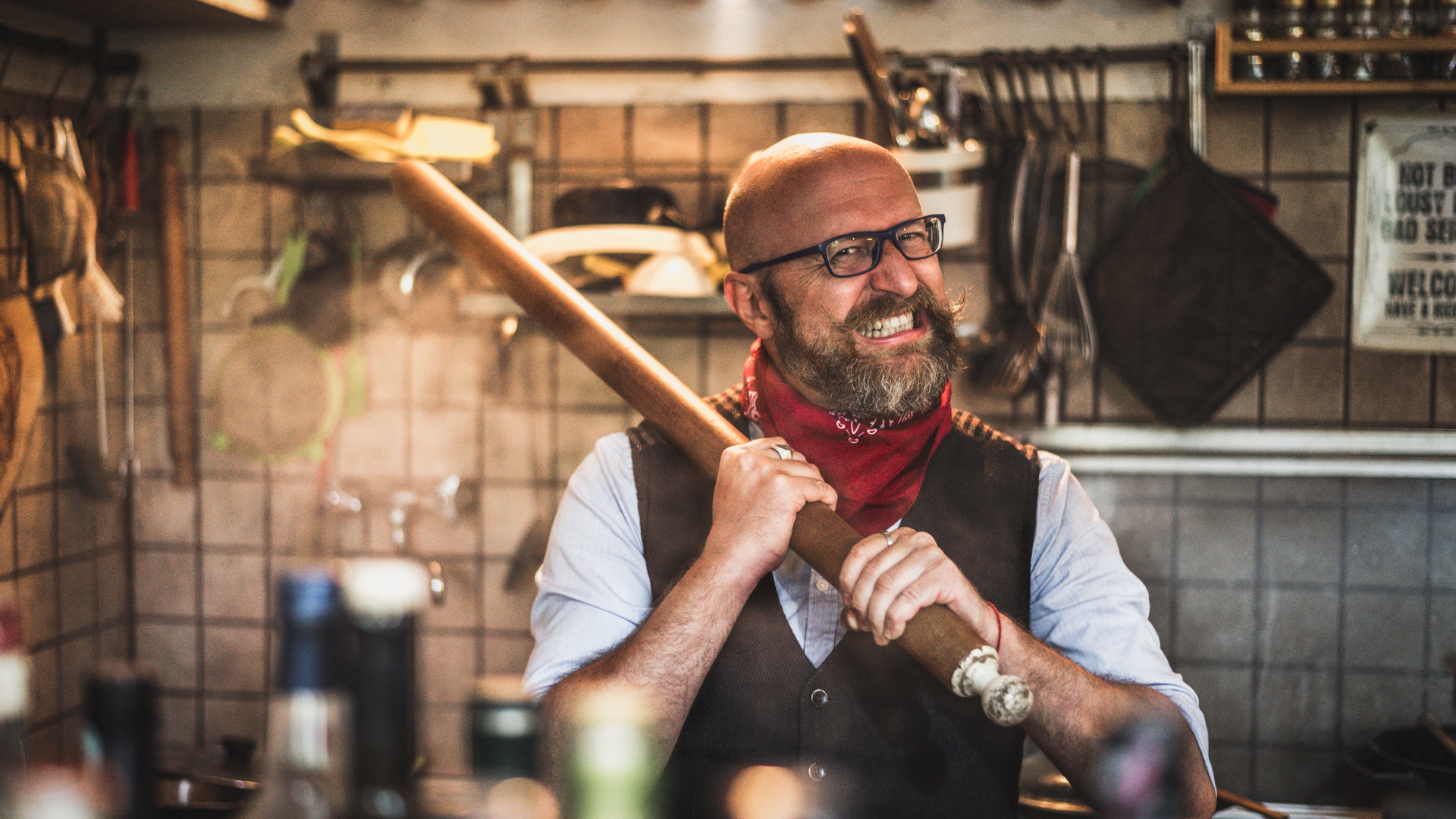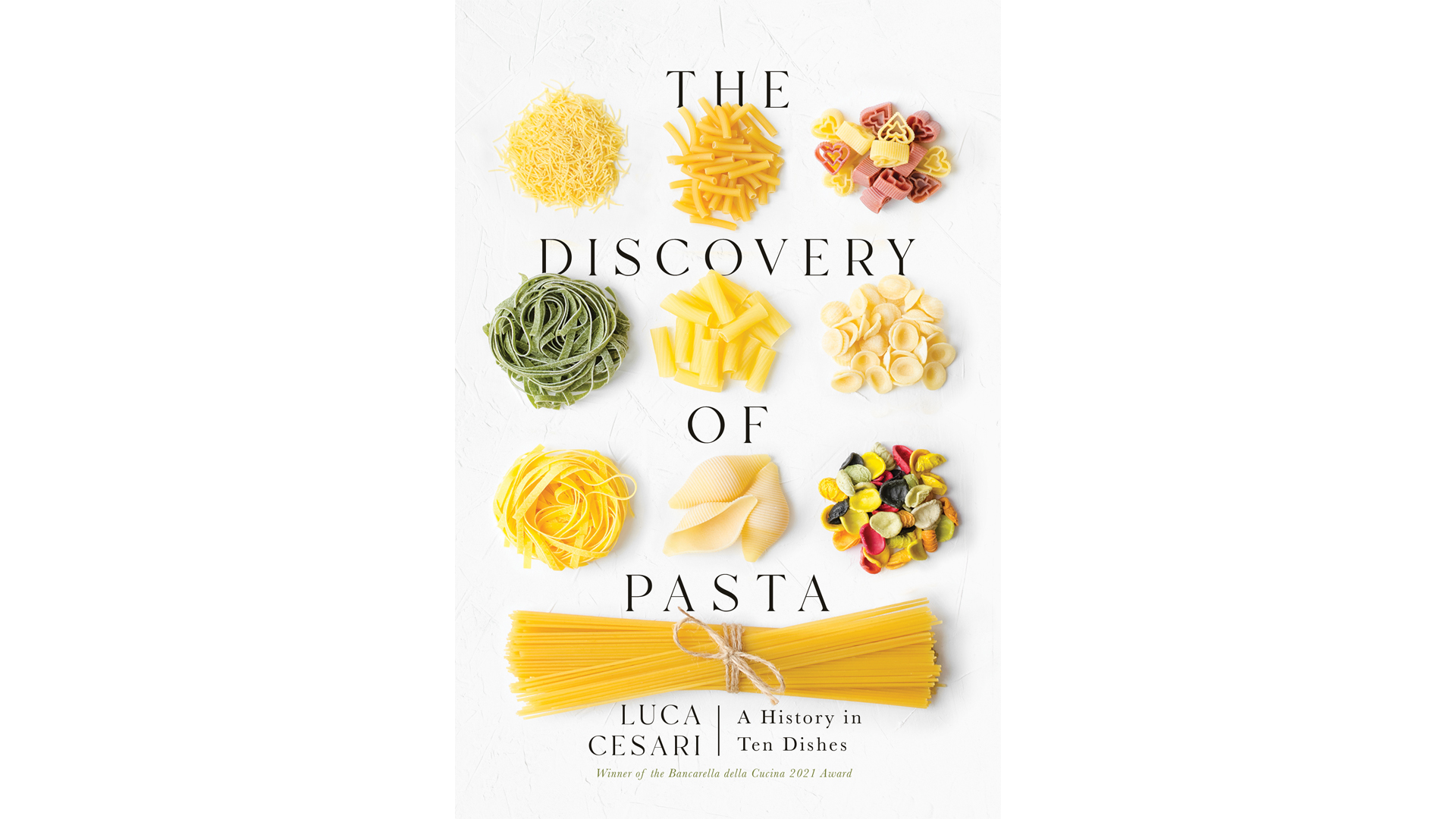In the new book, The Discovery of Pasta: A History in Ten Dishes, Italian historian Luca Cesari explores the origins of many of our favorite pasta sauces from the original Fettuccine Alfredo, a dish created in Rome, to spaghetti al pomodoro, the quintessentially Italian pasta dish that defines Italian and Italian American cuisine.
The book looks at a variety of pasta such as gnocchi, tortellini, and lasagna, and numerous sauces including Amatriciana, Carbonara, Ragù alla Bolognese, and pesto. In the deeply researched volume, he also weaves humor and entertaining stories into the narrative. The book is translated from the original Italian by Johanna Bishop. Luca Cesari resides in Italy.
***
America Domani: Pasta is obviously a big part of Italian culture and so many sauces are so specific to regional cuisine. How did you decide on the ten most important to focus on with the book?
Luca Cesari: I have chosen the most representative pasta dishes of Italian cuisine, even if not all of them are so famous nowadays. However, some were more famous in the past than they are today, such as the Neapolitan ragù which was of fundamental importance for the development of all the pasta sauces we know today, including the Bolognese. There are other types of pasta that have a fascinating history, such as “penne alla vodka” or “spaghetti meatballs” that are globally important, especially in the Anglo-Saxon world, but almost absent in Italy, which is why I have excluded them from the list. I hope to be able to talk about them in a future publication
AD: Was there anything that surprised you in the research?
LC: Strangely enough, I was surprised to discover that the first form of lasagna probably dates back to ancient Roman times. It wasn't at all obvious because the invention of pasta normally refers to the medieval period, and I think I was among the first to find evidence of it. The research was not easy because the evidence is not found in ancient cookbooks or chronicles, but in an orthopedic manual in Latin from Roman times where it talks about the foods that people who broke their jaw could eat: only in this way I could understand that the ancient "lagana" could be boiled and not only cooked in the oven or fried, a sort of grandfather of modern pasta.
AD: Did you debunk any myths about Italian food where the truth was less satisfying than the fictional story?
LC: There are some very amusing, though patently false, legends. The one about Marco Polo's sailor named Spaghetti and discovering pasta, for example, is hilarious. That said, I find that historical reality, in all its complexity, adds a lot of charm to the usual legendary narrative that is often stereotyped. Great queens (such as Catherine de' Medici) teaching the French how to cook crepes, or clever cooks getting inspired by Venus's navel to create tortellini, to wise shepherds inventing the most famous recipes with a few healthy ingredients: these stories teach us something, but only with respect to the present, to what we wish had happened, but never to the past.
In many other fields, historical research has gotten rid of these legendary reconstructions, which for some reason endure in the reconstruction of the mythological past of cooking, and this has to do with the deep roots of our culinary identity
AD: In the Ragù alla Napoletana section, you mention the timballo, an Italian version of the French timbale – essentially, a baked pasta dish wrapped in pasta. Most Americans today know these as timpano because of the film "Big Night" by Stanley Tucci. Did you find that the regional dialects made it more of a challenge to research some of the historic differences?
LC: In fact, the words "timbale" and "timpano" are both found in Italian cooking treatises, the first of French derivation, the second used in southern Italy, and indicate the same preparation. On a linguistic level, the recipe books, especially the oldest ones, are not easy to understand, but normally they are all written in Italian and the dialectal words are limited to a few cases.
However, there are some exceptions, such as Ippolito Cavalcanti's recipe book from the first half of the 19th century where the part dedicated to home cooking, the most common and everyday one, is written completely in the Neapolitan language. Since this recipe book is of capital importance, I had to make a real translation, complicated by the fact that some words are obsolete, so it was necessary to consult the dictionaries of the time. Then there are other cases in which words of French origin, whose culinary school had a strong influence throughout Europe, were written as they were pronounced, so, for example, "hors-d'oeuvre" becomes "ordura".
AD: You note that during World War II, cookbook production continued. Since this was a period of scarcity, domestic cooking at that time reflected that can talk about how that impacted foods of the era?
LC: Cookbooks from the Second World War period had to adapt their recipes to the widespread food shortage. An emblematic case is Petronilla's cookbooks which provided useful advice for housewives to cook dishes for the whole family at reasonable costs. But it wasn't just an economic problem: some foods were rationed and you received a ration card (the "tessera annonaria") with which you could buy a certain amount, so the recipes also counted this aspect to make the list of ingredients. For example, the wartime version of Bolognese sauce was made with cooked blood, an animal derivative that was not subjected to rationing.
AD: The war had a big impact on Italian cuisine. One of those big changes is the introduction of spaghetti Carbonara. Yet today, it's very much a pillar of the cuisine of Rome. Do you see this as a way that Italians are willing to embrace something that is new?
LC: Exactly like that. I think that the permeability of Italian cuisine to novelty and contamination is one of the characteristics that has allowed it to become one of the most represented and loved abroad too. This is a fundamental aspect that has allowed Italian cuisine to make a huge leap forward and surpass the French cuisine that had dominated Europe, including Italy, over the last three centuries.
In large part, this miracle is also due to dishes such as pasta and pizza which are fully Italian and can undergo modifications without losing their identity. Italians are extremely proud of the origins of their cuisine and think that a great dish must have ancient origins at all costs, when in reality the true strength of Italian cuisine is that it can be contaminated more freely than others, without become less Italian. Obviously, there are limits, but even the most traditional dishes are much less rigid than you think and their history proves it. This is one of the deepest reasons that prompted me to write this book.
AD: The classic dish everyone wants to know about is spaghetti al pomodoro. I'm curious if any of your research explains why spaghetti was such a popular choice for pasta shape when there are so many available, short, long, flat, spiral, pierced. Especially in early 20th century America, spaghetti seems preferred.
LC: Long shapes of pasta, sometimes with a tiny hole inside like "bucatini" or "perciatelli", were by far the most popular in southern Italy at the time of the massive waves of Italian immigration to America. Just look at the nineteenth-century prints that represent the Neapolitan "maccheronari" who served thick spaghetti seasoned with grated cheese and a little tomato that was eaten with the hands by lifting them up and rolling them directly in the mouth. Rather widespread street food that entered the homes of all immigrants in the United States and, for a long time, remained confined to Italian neighborhoods. Within a few decades, spaghetti with tomato sauce has become a true symbol of Italian cuisine in America and have remained among the favorite dishes of Italian cuisine before being ousted by recipes with a more American imprint such as spaghetti meatballs or carbonara.
AD: There is a lot of discussion about the ingredients in amatriciana and the correct way of making it. Are Italian home cooks this concerned about the correct recipe or do they typically make their own variation?
LC: In general, the majority of cooks stick to the more consolidated amatriciana recipe which includes only pork cheek cured meat, tomato, pecorino, and chili pepper. On this type of recipe, so representative of the Italian gastronomic identity, there has been an ongoing debate that has lasted for decades, and at the moment the recipe that only includes these ingredients prevails.
It could be compared to a struggle for the conquest of an ecological niche in nature: for now, there are favorable conditions for this recipe after a natural selection that has seen the other variants become extinct. But in the kitchen, as in nature, it doesn't necessarily last forever: evolution is always on the move.
AD: So do you cook amatriciana with onion?
LC: It's a trick question. The dominant version today does not allow onion inside, but just look at the recipe books of a few decades ago onion was practically everywhere and it cannot be said that today's amatriciana is a better or more traditional recipe, quite the contrary. If it is very difficult to find onion among the ingredients in restaurants, many home recipes have resisted the cultural revolution of the last half-century and continue to use it and there is nothing wrong. Indeed, it could be said that it is even more correct because the majority of tomato-based pasta sauces in Italy require a garlic or onion-based "soffritto".



